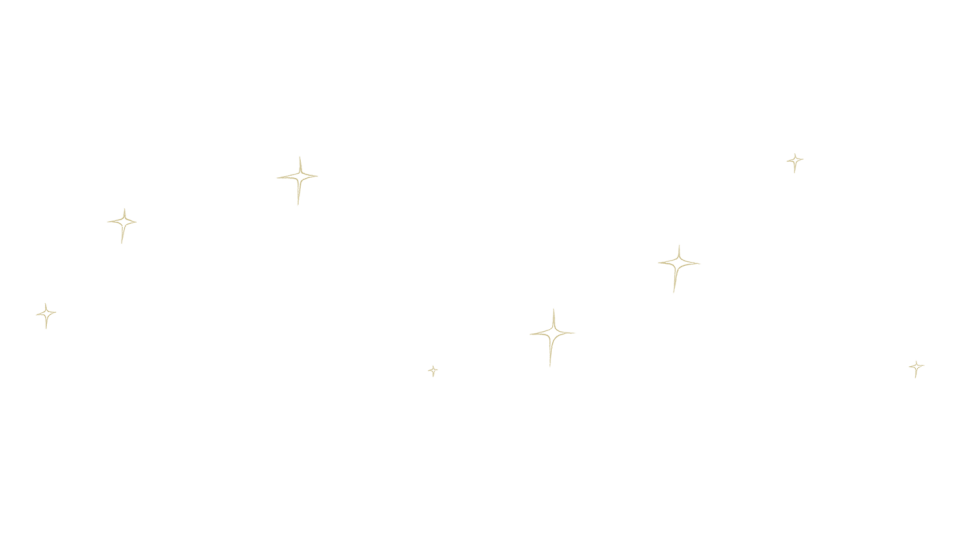ANNUAL REVIEW 2024


If you have any feedback about our new interactive report, or if you or your organisation would like support from Pawsey to help you reach new frontiers, get in touch!
NEW FRONTIERS

General / Administration
P +61 8 6436 8830
F +61 8 6436 8555
Pawsey Supercomputing
Research Centre
1 Bryce Avenue
Kensington WA 6151
Australia
Enquiries
Media Enquiries
P +61 8 6436 8920
pr@pawsey.org.au
Website by Purple. Artwork by Samara Ainge.
The Pawsey Supercomputing Research Centre is supported by the Australian Government through a $70 million grant made under the Industry Research and Development Act and administered by the Department of Industry, Innovation and Science. Pawsey is also supported by the Australian Government under the National Collaborative Research Infrastructure Strategy (NCRIS) through the Department of Education. The Centre would also like to acknowledge the support provided by the Western Australian Government and its Partner organisations.
We are grateful for the support of our core partners.





// From a time when time was not
Ancient
Explore our other frontiers
Fieldwork studies have identified petroglyphs for close observation and data is being collected to assess the impact of air pollution and any other human‑induced effects such as climate change.
Pawsey supported the original study design optimisation as well as Computational Fluid Dynamics (CFD) modelling of airflow and air quality, over a 50km by 50km area.
Our infrastructure is also being used for bioinformatics on the microbial communities on the rock surface, while our Nimbus Research Cloud Service is being used to process real-time data from 21 air quality monitoring stations.
Researchers are soon to start a lidar air quality measurement campaign which will capture 3-5 TB of data per day that will be processed at Pawsey.
The project is backed by a broad research consortium that includes Curtin University, the University of Wollongong, Queensland University of Technology, University of Western Australia and University of Melbourne, as well as numerous industry representatives.
The Murujuga Rock Art Monitoring Project team is overseen by the Murujuga Aboriginal Corporation (MAC) and Western Australia’s Department of Water and Environmental Regulation (DWER).
Together, there is a concerted effort to understand, observe and protect rock art for generations to come.
The world’s oldest art is claimed by many countries, from hand stencils dated at 40,000 years or more in Sulawesi to a cave wall animal in Borneo that could be 50,000 years old to non-figurative art on the Iberian Peninsula believed to be 60,000 years old or more.
But Western Australia has its own claim, with a million remarkable petroglyphs on the Burrup Peninsula.
Known as the Murujuga rock art, it is the world’s largest and oldest collection of petroglyphs, which are images created by scraping or abrading rock rather than applying pigment.
The art is also under threat, sitting as it does near a growing industrial hub close to Karratha, home to oil and gas facilities and fertiliser plants.
The images were engraved by countless generations into the rocks, with the oldest dating back at least 40,000 years with research suggesting some could be significantly earlier than that.
They include some of the world’s earliest known depictions of human faces, complex geometric designs, and images of animals now extinct such as the fat-tailed kangaroo.
But the rocks themselves also offer a rich history.
The engraved surface layer was created by microbes living on the rock incorporating compounds from dust deposits. The researchers have collected and sequenced several hundred samples from the rock samples and surrounding soil.
Pawsey is proud to be supporting the preservation of this extraordinary record of our ancestors, providing the infrastructure needed to study anthropogenic activity that could result in a degradation of the rock art.
Close
// How can a supercomputer protect ancient art?



















The Universe itself is thought to be 13.77 billion years old.
This FRB is on the very limits of what we can see and pinpoint with current radio telescopes.
Its location has been confirmed by the European Southern Observatory’s Very Large Telescope and the Hubble Space Telescope.
With the international SKA telescopes now under construction — SKA-Low on Wajarri Country in Western Australia and SKA-Mid in the Northern Cape of South Africa — we hope to see back even further in time to learn what causes these massive energy bursts.
A project involving the Murchison Widefield Array, with direct support from Pawsey expertise has been developing a code to detect FRBs with low-frequency telescopes. Led by Curtin University’s Marcin Sokolowski, this project could enable the real-time observation of FRBs.
Pawsey is proud to be supporting this frontier science, continuing to help radio astronomers unlock the secrets of the Universe.
…twice the previous record for distance and age.
It was found in 2022 by ASKAP and it has taken about 8 billion years for the light to reach us…
Finding FRBs might help us ‘weigh’ the Universe, to find dark matter that should exist between galaxies but which we have so far been unable to see.
CSIRO’s ASKAP radio telescope has found more than 20 FRBs but the most exciting is called FRB 20220610A.
Exploring ancient frontiers
They take just a millisecond…
…but can release as much energy as the sun does in 30 years...
A fast radio burst or FRB is a sudden burst of incredibly powerful energy.
How we support astronomy through our work
Astronomy captures the public’s imagination and inspires interest in science and technology, but to discover billion-year-old secrets means reliance on large-scale compute and storage.
For more than a decade, we have supported the world’s most significant astronomical research, by storing and processing data being collected by the two SKA precursor telescopes located on Wajarri Yamaji Country at Inayarrimanha Ilgari Bundara, the CSIRO Murchison Radio-astronomy Observatory — the Murchison Widefield Array (MWA) and CSIRO’s ASKAP radio telescope.
The MWA telescope produces data at a rate of 17 gigabytes per second, the equivalent of four high-definition movies every moment of every day.
In March 2024, the SKA Observatory (SKAO) celebrated an exciting milestone, installing the first antennas for the SKA-Low telescope in Australia. The first stations have been completed and are beginning to observe the Universe using their newly installed system at Pawsey to process and analyse their data. When fully operational, the two SKA telescopes will produce enough data to fill 4000 laptops a day.
As we continue to foster global collaboration, Pawsey brings together expertise from around the world to address fundamental questions about the Universe.
Radio astronomers embark on studies that span both distance and time. They are pioneers who peer through space to the earliest moments of the Universe.
From our earliest days, Pawsey has been connected with Australian radio astronomy, and we have been proud to support the growth and development of this field of science over many years.




CASE STUDY


// From a time when time was not

Ancient

Website by Purple. Artwork by Samara Ainge.
If you have any feedback about our new interactive report, or if you or your organisation would like support from Pawsey to help you reach new frontiers, get in touch!
NEW FRONTIERS

General / Administration
P +61 8 6436 8830
F +61 8 6436 8555
Pawsey Supercomputing
Research Centre
1 Bryce Avenue
Kensington WA 6151
Australia
Enquiries
Media Enquiries
P +61 8 6436 8920
pr@pawsey.org.au
The Pawsey Supercomputing Research Centre is supported by the Australian Government through a $70 million grant made under the Industry Research and Development Act and administered by the Department of Industry, Innovation and Science. Pawsey is also supported by the Australian Government under the National Collaborative Research Infrastructure Strategy (NCRIS) through the Department of Education. The Centre would also like to acknowledge the support provided by the Western Australian Government and its Partner organisations.
We are grateful for the support of our core partners.
Explore our other frontiers
CASE STUDY






















The Universe itself is thought to be 13.77 billion years old.
This FRB is on the very limits of what we can see and pinpoint with current radio telescopes.
Its location has been confirmed by the European Southern Observatory’s Very Large Telescope and the Hubble Space Telescope.
With the international SKA telescopes now under construction — SKA-Low on Wajarri Country in Western Australia and SKA-Mid in the Northern Cape of South Africa — we hope to see back even further in time to learn what causes these massive energy bursts.
A project involving the Murchison Widefield Array, with direct support from Pawsey expertise has been developing a code to detect FRBs with low-frequency telescopes. Led by Curtin University’s Marcin Sokolowski, this project could enable the real-time observation of FRBs.
Pawsey is proud to be supporting this frontier science, continuing to help radio astronomers unlock the secrets of the Universe.
…twice the previous record for distance and age.
It was found in 2022 by ASKAP and it has taken about 8 billion years for the light to reach us…
Finding FRBs might help us ‘weigh’ the Universe, to find dark matter that should exist between galaxies but which we have so far been unable to see.
CSIRO’s ASKAP radio telescope has found more than 20 FRBs but the most exciting is called FRB 20220610A.
Exploring ancient frontiers
They take just a millisecond…
…but can release as much energy as the sun does in 30 years...
A fast radio burst or FRB is a sudden burst of incredibly powerful energy.
How we support astronomy through our work
Astronomy captures the public’s imagination and inspires interest in science and technology, but to discover billion-year-old secrets means reliance on large-scale compute and storage.
For more than a decade, we have supported the world’s most significant astronomical research, by storing and processing data being collected by the two SKA precursor telescopes located on Wajarri Yamaji Country at Inayarrimanha Ilgari Bundara, the CSIRO Murchison Radio-astronomy Observatory — the Murchison Widefield Array (MWA) and CSIRO’s ASKAP radio telescope.
The MWA telescope produces data at a rate of 17 gigabytes per second, the equivalent of four high-definition movies every moment of every day.
In March 2024, the SKA Observatory (SKAO) celebrated an exciting milestone, installing the first antennas for the SKA-Low telescope in Australia. The first stations have been completed and are beginning to observe the Universe using their newly installed system at Pawsey to process and analyse their data. When fully operational, the two SKA telescopes will produce enough data to fill 4000 laptops a day.
As we continue to foster global collaboration, Pawsey brings together expertise from around the world to address fundamental questions about the Universe.
Radio astronomers embark on studies that span both distance and time. They are pioneers who peer through space to the earliest moments of the Universe.
From our earliest days, Pawsey has been connected with Australian radio astronomy, and we have been proud to support the growth and development of this field of science over many years.



